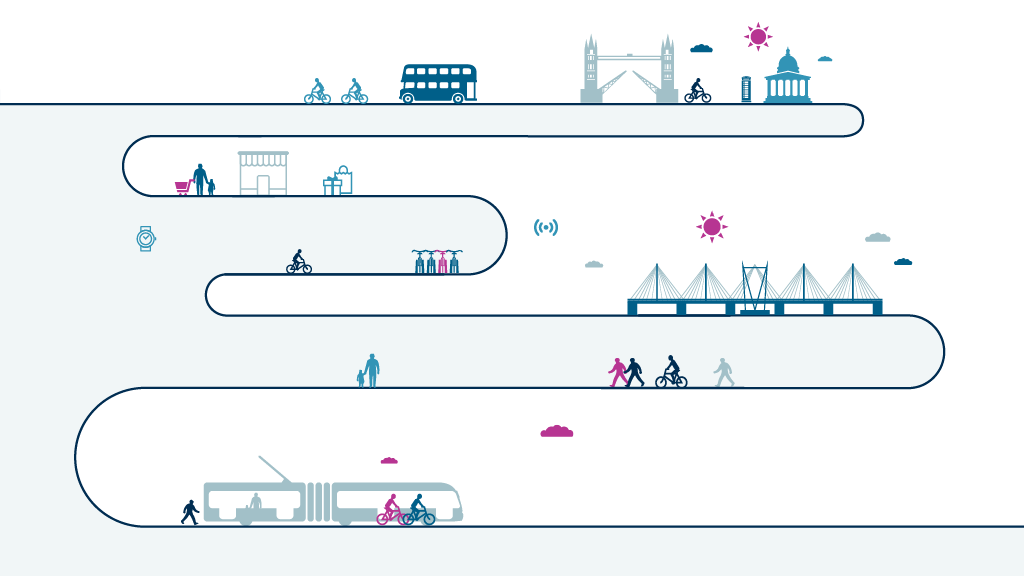Can we improve the public transit user experience?
Rethinking Public Transit
What We Did
In partnership with a group of collaborators, we identified key sections of the commuter journey with the greatest opportunity for impact. Using the London Underground as a case study, our ultimate goal is to identify both locally applicable solutions and scalable ideas that can become a prototype for other transport modes and other cities.
The Context
With over 1.3 billion commuters every year, the London Underground is a prime example of the need and opportunity to leverage new strategies to improve public transportation’s user experience. Recent conjecture about 24-7 operation, beginning with 24-hour weekend operation in 2015/16, and its broader economic effects also informed our study.
The Results
Building on these categories, we then identified a more detailed set of opportunities for exploration, including pre-journey planning, sustainable energy sources, branded retail opportunities, using trains as prototypes for user input, expanding to 24-hour weekend service, integrating digital signage, and the transformation of underutilized infrastructure. A particular focus on infrastructure transformation led to the development of our “London Underline” design proposal to convert abandoned subway lines into pedestrian and bicycle paths.
The London Underline is Gensler’s speculative design proposal to convert disused subway tunnels into the world’s first self-sustainable subterranean pedestrian and cycle path network. The project was awarded Best Conceptual Project in the 2015 London Planning Awards and received the 2015 Gensler Design Excellence Awards (GDEA) People’s Choice award.
What This Means
The full transit experience must be considered in tandem. Understanding the user experience and decision making process before and after using public transportation informs smart planning. Alternative transportation modes—buses, cycling, trains—should also be considered to understand how ridership and experience on one influences the others.
New transport strategies require cross-discipline collaboration. This research integrates design expertise across project types including transportation, retail, digital media, and branding. The sharing of ideas between practices and professionals with differing experience allows for broader, more innovative solutions.
New opportunities for transport can capture the public's attention. The work focused particular attention on opportunities to better leverage existing infrastructure. This resulted in a concept design for the London Underline, which catapulted the project into the public realm, and created unprecedented interest in the proposal across the world.
What’s Next?
Learn More
Team
Ian Mulcahey, Jon Tollit, Trevor To, Rachel Barnes, Anupama Joshi, Boqian Li, Henry Lindblom, Lara Marrero, Craig O’Halloran, Adam Phillips, Riddhi Parakh, Leah Ray, Tony Soares, Miranda Squire, Tony Wilks
Year Completed
2016
Comments or ideas for further questions we should investigate?
